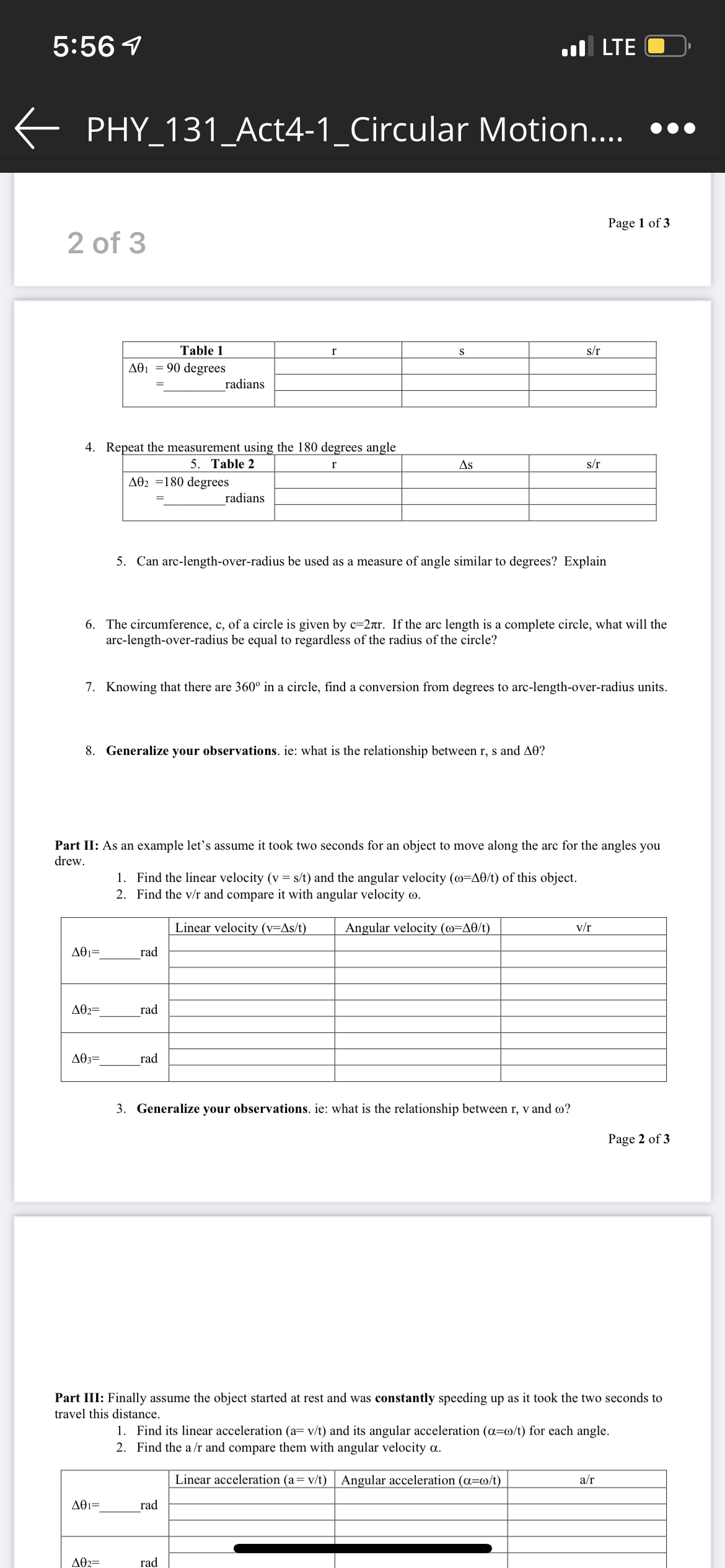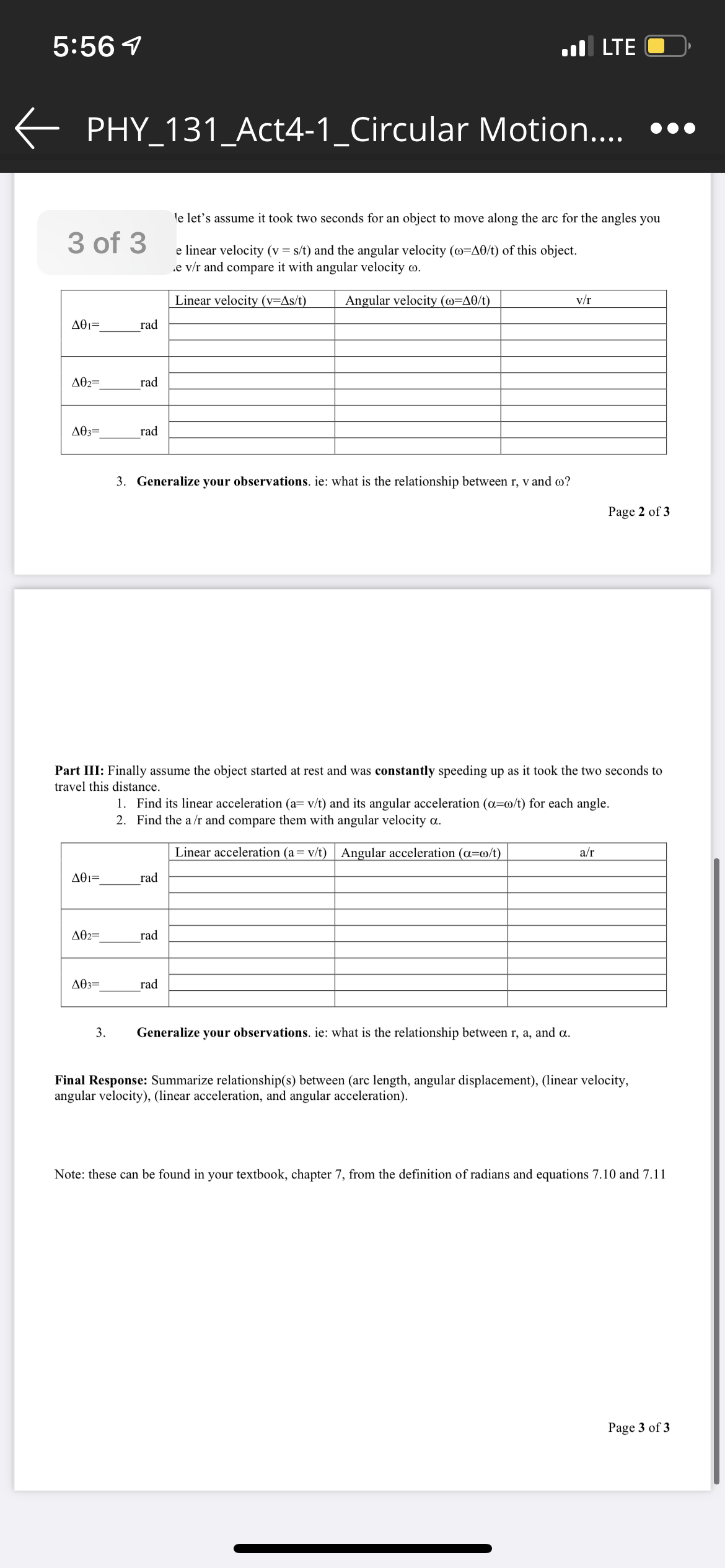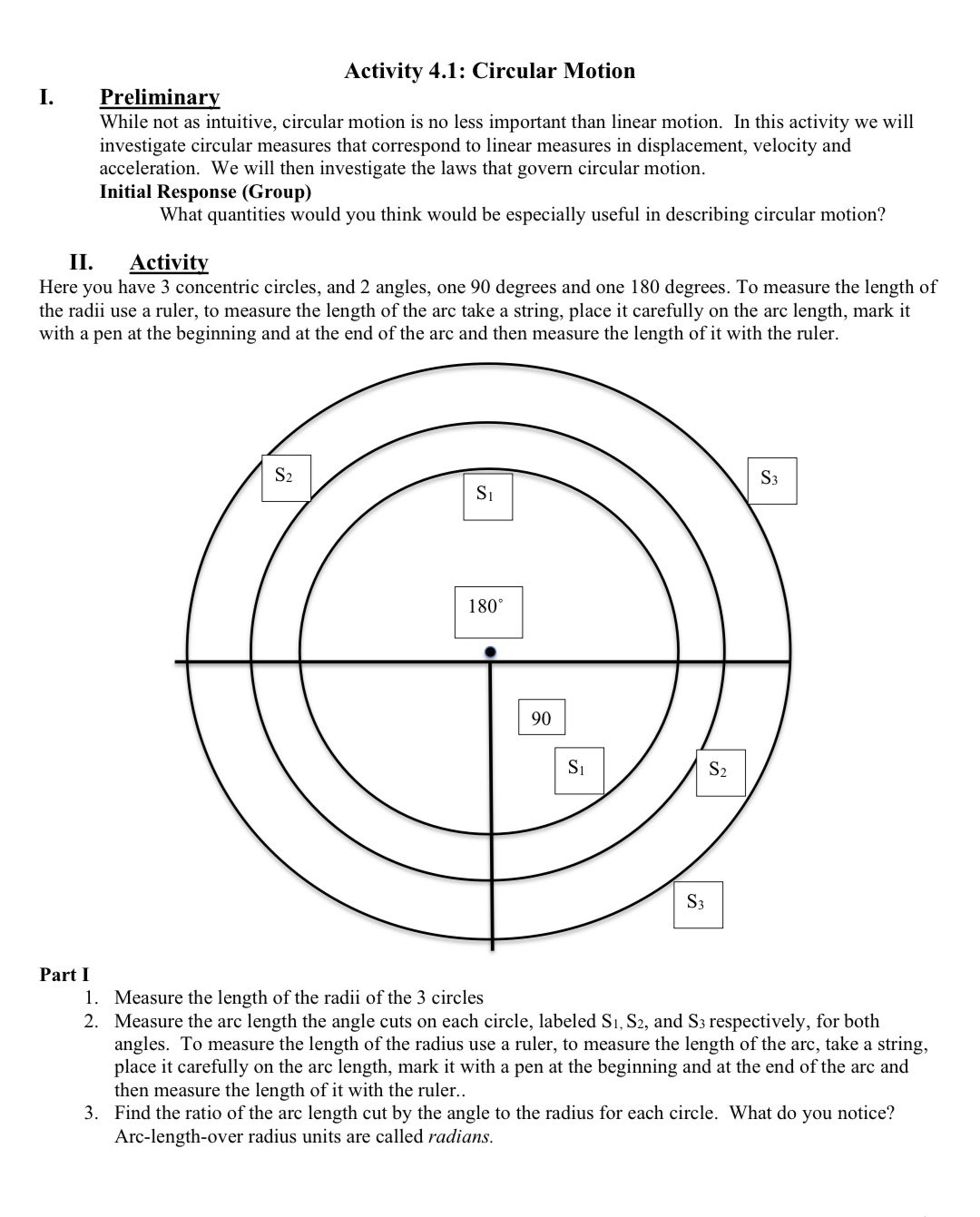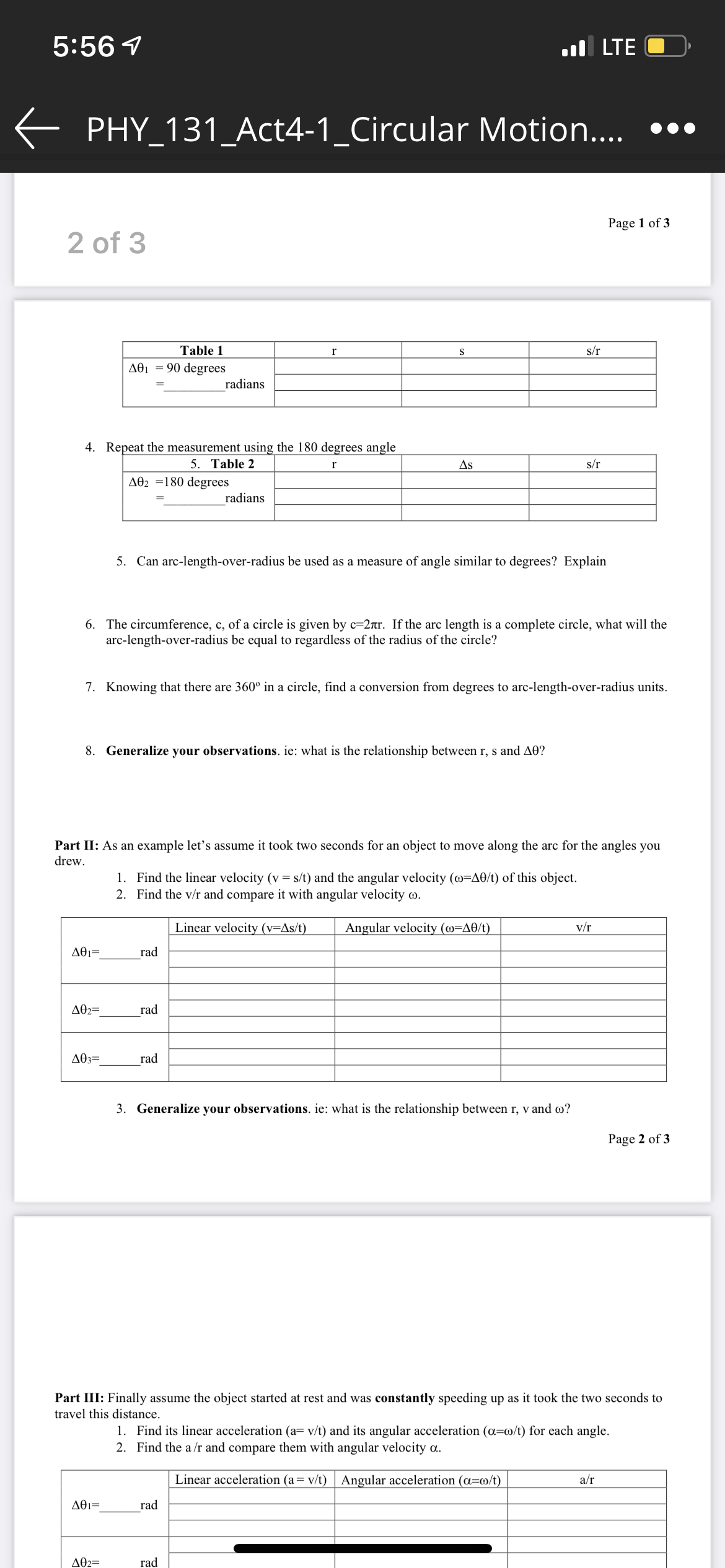
here is my revised question I need help with part 2 question 123 and part all of 3 and final response
5:56 7 Of LTE D PHY_131_Act4-1_Circular Motion.... . . . le let's assume it took two seconds for an object to move along the arc for the angles you 3 of 3 e linear velocity (v = s/t) and the angular velocity (@=40/t) of this object. e v/r and compare it with angular velocity w. Linear velocity (v=As/t) Angular velocity (@=40/t) v/r 401= rad 402= rad 403= rad 3. Generalize your observations. ie: what is the relationship between r, v and w? Page 2 of 3 Part III: Finally assume the object started at rest and was constantly speeding up as it took the two seconds to travel this distance. 1. Find its linear acceleration (a= v/t) and its angular acceleration (a=w/t) for each angle. 2. Find the a/r and compare them with angular velocity a. Linear acceleration (a = v/t) Angular acceleration (a=w/t) a/r 401= rad 402= rad 403= rad 3. Generalize your observations. ie: what is the relationship between r, a, and a. Final Response: Summarize relationship(s) between (arc length, angular displacement), (linear velocity, angular velocity), (linear acceleration, and angular acceleration). Note: these can be found in your textbook, chapter 7, from the definition of radians and equations 7.10 and 7.11 Page 3 of 3Activity 4.1: Circular Motion 1. Preliminary While not as intuitive, circular motion is no less important than linear motion. In this activity we will investigate circular measures that correspond to linear measures in displacement, velocity and acceleration. We will then investigate the laws that govern circular motion. Initial Response (Group) What quantities would you think would be especially useful in describing circular motion? II. Activig: Here you have 3 concentric circles, and 2 angles, one 90 degrees and one 180 degrees. To measure the length of the radii use a ruler, to measure the length of the arc take a string, place it carefully on the arc length, mark it with a pen at the beginning and at the end of the arc and then measure the length of it with the ruler. Part I 1. Measure the length of the radii of the 3 circles 2. Measure the arc length the angle cuts on each circle, labeled SI, 82, and 83 respectively, for both angles. To measure the length of the radius use a ruler, to measure the length of the are, take a string, place it carefully on the arc length, mark it with a pen at the beginning and at the end of the arc and then measure the length of it with the ruler. 3. Find the ratio of the arc length cut by the angle to the radius for each circle. What do you notice? Arc-length-over radius units are called radians. 5:56 7 Of LTE D PHY_131_Act4-1_Circular Motion.... . . . Page 1 of 3 2 of 3 Table 1 r S s/r 401 = 90 degrees radians 4. Repeat the measurement using the 180 degrees angle 5. Table 2 As s/r 402 =180 degrees radians 5. Can arc-length-over-radius be used as a measure of angle similar to degrees? Explain 6. The circumference, c, of a circle is given by c=2nr. If the arc length is a complete circle, what will the arc-length-over-radius be equal to regardless of the radius of the circle? 7. Knowing that there are 360 in a circle, find a conversion from degrees to arc-length-over-radius units. 8. Generalize your observations. ie: what is the relationship between r, s and 40? Part II: As an example let's assume it took two seconds for an object to move along the arc for the angles you drew. 1. Find the linear velocity (v = s/t) and the angular velocity (=40/t) of this object. 2. Find the v/r and compare it with angular velocity w. Linear velocity (v=As/t) Angular velocity (@=40/t) v/r 401= rad 402= rad 403= rad 3. Generalize your observations. ie: what is the relationship between r, v and w? Page 2 of 3 Part III: Finally assume the object started at rest and was constantly speeding up as it took the two seconds to travel this distance. 1. Find its linear acceleration (a= v/t) and its angular acceleration (a=w/t) for each angle. 2. Find the a/r and compare them with angular velocity a. Linear acceleration (a = v/t) Angular acceleration (a=w/t) a/r 401= rad










